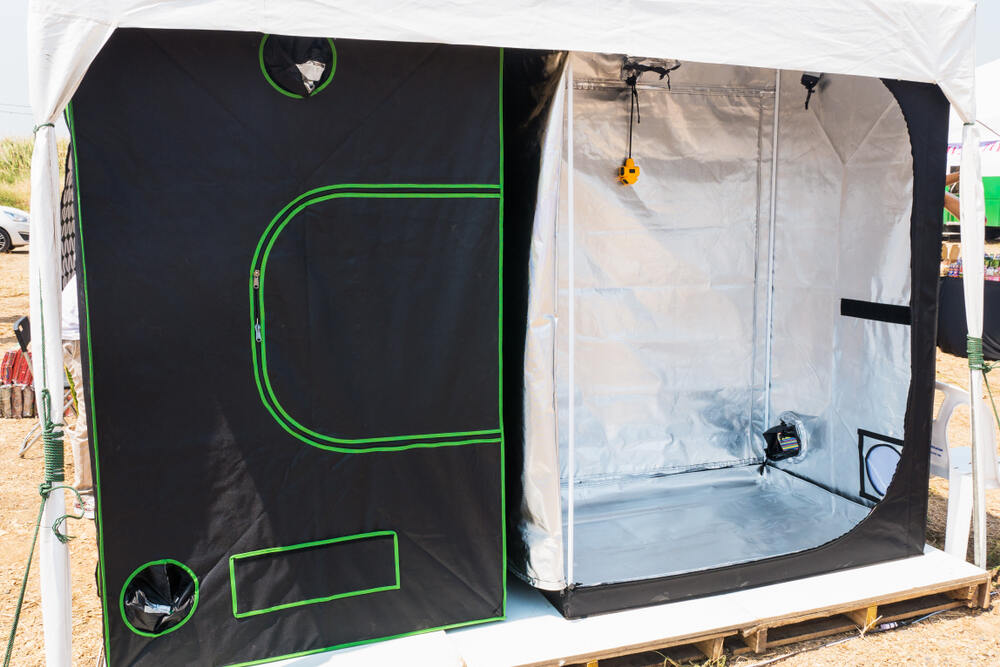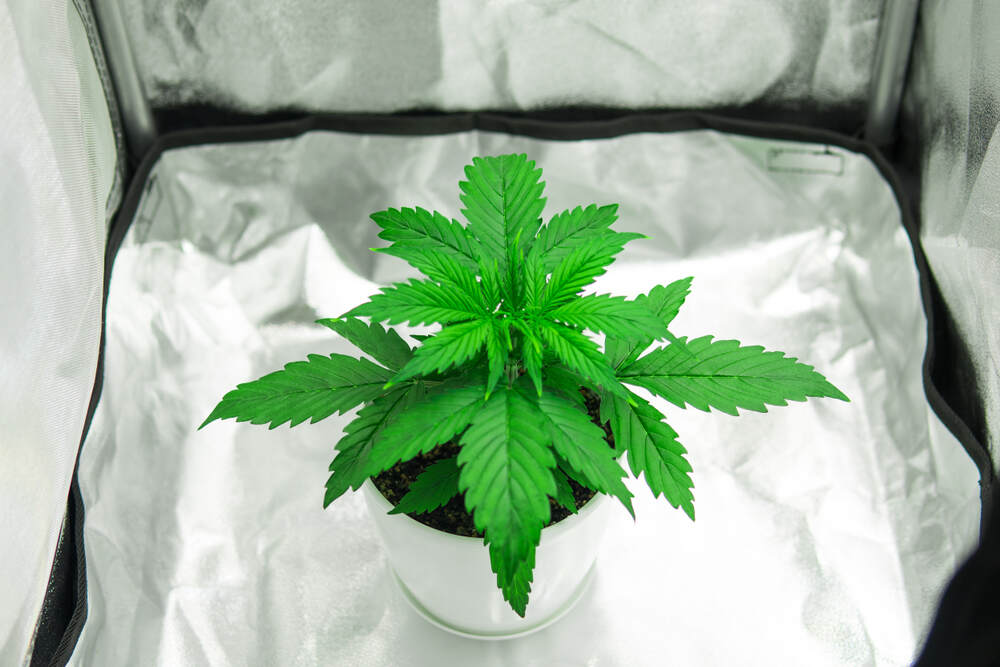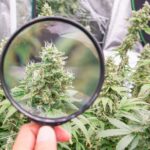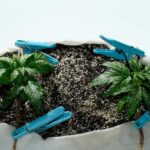The Best Fluffy Pancakes recipe you will fall in love with. Full of tips and tricks to help you make the best pancakes.

How many autoflowers can you fit in a tent?
Growing autoflowering cannabis indoors is one of the most rewarding setups a grower can have. You get speed, control, and year-round harvests—but there’s one question every grower ends up asking at some point: how many autoflowers can I realistically fit in my tent? This isn’t just about cramming as many plants as possible into a grow space. It’s about balancing plant count with healthy development, air circulation, and yield potential.
I’ve grown autos in everything from 2×2 closets to custom 5×5 setups, and in this guide, I’ll walk you through exactly how I calculate plant count. You’ll learn what affects spacing, what to expect per tent size, and how to maximize your yield without overcrowding your girls.
Factors that influence autoflower capacity in a tent
Before you can decide how many autos to run in your tent, you need to understand the main factors that dictate spacing. It’s not a one-size-fits-all answer, and this is where many new growers go wrong. Let me break it down.
Tent size and dimensions – why both footprint and height matter
The size of your tent sets the upper limit for how many plants you can grow, but it’s not just the floor area that matters—it’s also how tall the tent is. Some autos stay short and bushy, while others can stretch like a sativa on a mission.
If your tent is too short, even small autos can outgrow your lighting distance, leading to light burn or larfy buds. Height gives you room to train plants and hang your lights at the optimal distance, especially if you’re using LEDs with high intensity.

Autoflower strain characteristics – indica vs sativa‑dominant and plant morphology
Different autos grow differently. Indica-dominant autos tend to be shorter, broader, and bushier—these girls are made for tight quarters. Sativa-leaning autos are lankier and like to stretch during the first few weeks of flower, sometimes doubling in size.
Here’s how I categorize them:
- Compact autos (indica-dominant): Ideal for smaller tents, fit more per square foot.
- Stretchy autos (sativa-dominant): Require more spacing to prevent canopy overlap.
- Hybrid autos: Sit somewhere in between, often manageable with a bit of low-stress training.
Always check the breeder’s description and grower reviews. If they say the plant is “vigorous” or “likes to stretch,” plan accordingly.
Pot size and plant training techniques – how pot volume and LST/SOG impact spacing
The size of the pot you use directly influences how many plants you can fit. A 3-gallon fabric pot takes up significantly less space than a 5-gallon one. But bigger pots grow bigger plants with bigger root systems.
Here’s what I recommend:
- 2–3 gallon pots: For smaller tents or if you’re doing a Sea of Green (SOG) with many small autos.
- 5-gallon pots: Ideal for fewer, larger plants with high yield potential.
Training plays a big role, too. I use low-stress training (LST) to widen the canopy, which gives more bud sites and better light penetration. This also spreads plants sideways, so they need more room—but the payoff is higher yield per plant.
Lighting setup and light intensity footprint per plant
Your lighting setup defines how many plants you can support. Just because you can physically fit eight autos in a 4×4 tent doesn’t mean your light can feed them all properly. Cannabis is light-hungry during flower, and each plant needs an even share.
Use this rule of thumb: each square foot needs 30–40 watts of true LED power. Then check your light’s PAR map—some brands publish these. Make sure the intensity is even across the canopy so your outer plants don’t lag behind.
Recommended autoflower plant counts by tent size
Now that you understand what affects spacing, let’s talk real-world numbers. Below is what I’ve personally tested and recommend per tent size, based on healthy growth and strong yields.
How many in a 2×2 tent (1–3 auto) – pros and trade‑offs
A 2×2 tent is tiny. You’re working with just 4 square feet, which is basically enough for one or two plants if you’re letting them grow out fully. Three plants is pushing it unless you’re using small pots and fast-flowering compact autos.
Pros:
- Easier to manage airflow and temps
- Great for stealth or small apartments
Trade-offs:
- Limited yield
- Very little room to work
I usually run one big auto trained out wide, or two small ones with minimal training.

How many in a 3×3 tent (3–6 autos recommended, 4 suggested for ease of care)
This is the sweet spot for many home growers. You’ve got 9 square feet, and you can comfortably fit 3 to 4 autos with 3-5 gallon pots.
If you want to push it, six autos in smaller pots with aggressive training is possible—but maintenance becomes harder. Watering, pruning, and airflow get tricky when you’re elbow-deep in leaves.
I run four autos in 5-gallon pots with LST and get excellent yields per plant.
How many in a 4×4 tent — common rule of thumb one per square foot (16 max), but 4–6 optimal per experienced growers
A 4×4 tent gives you flexibility. While some growers try to fit up to 16 plants using a strict SOG setup and small pots, that’s not ideal unless you’re really experienced. Overcrowding can lead to stunted growth and mold.
The best balance? 4 to 6 autos in 5-gallon pots, each trained wide and low. You’ll maximize yield per plant and still have space for airflow and light penetration.
How many in a 5×5 tent — 8–10 comfortable, up to ~16 if compact and trained
This is where things get spacious. In a 5×5 tent, you’ve got 25 square feet to play with. You can easily run 8–10 autos in 3–5 gallon pots with LST and get incredible results.
If you’re going full SOG and using small pots with compact strains, you can fit up to 16 autos, but you’ll need to stay on top of pruning and airflow. I’ve done this before, but only when using the same strain and phenotype to keep height uniform.

Maximising yield while avoiding overcrowding
Packing in more plants doesn’t always mean more buds. Often, you get better results from fewer, healthier plants with proper spacing and training. Here’s how I push yields without cramping my tent.
Plant training strategies (LST, low‑stress training, defoliation, SCROG adaptation for autos)
- LST (Low-Stress Training): This is my go-to. I bend the main stem early and anchor it sideways. It opens up light to the lower branches and keeps the canopy flat.
- Defoliation: I carefully remove some fan leaves during mid-veg and early flower to improve light and airflow.
- SCROG (Screen of Green): Traditionally for photoperiods, but you can gently apply the principle to autos if you time it right. I use a soft trellis net to spread branches—just start early and don’t stress them during flowering.
Choosing pot size and medium based on grow method (soil, coco, hydro)
- Soil: Slower growth, but very forgiving. I use 5-gallon fabric pots in soil for bigger autos.
- Coco coir: Faster growth, more feeding control. Use slightly smaller pots (3–4 gallons) because the root system gets oxygen more efficiently.
- Hydro: Fastest growth but higher risk. If you go this route, keep your plant count lower—those autos will blow up.
Match your pot size to your grow method. Don’t go overboard on pot size if your tent doesn’t have the width.
Maintaining airflow, managing heat and humidity in dense grows
When your tent starts getting crowded, airflow becomes your best friend. I always run:
- An oscillating fan under the canopy
- A second fan at canopy level
- Proper intake and exhaust ventilation
I also keep RH (relative humidity) around 55–60% in veg, and drop it to 40–50% in flower. Too much humidity in a tight tent equals bud rot, plain and simple.
Common mistakes and how to avoid them
Let’s talk about what not to do. Over the years, I’ve seen a lot of good grows go sideways just from misjudging spacing.
Overcrowding leading to plant stress, nutrient competition, and reduced access for maintenance
When plants are too close:
- Their roots fight over nutrients
- Their leaves block light from lower bud sites
- You can’t reach the back plants to water or prune
The result? Lower yields, more stretch, and higher chance of mold or pests.
Ignoring strain variability and growth quirks – why genetics matter
Not all autos are equal. Even within the same strain, phenotypes can vary. If you mix different strains in one tent, you’ll likely get uneven canopies—some tall, some short.
This is why I often mono-crop my tent: one strain, one height, easier to manage.
Light coverage mismatch—assuming your lights cover tightly packed plants equally
I’ve made this mistake before. Just because your light has the wattage doesn’t mean it covers edge-to-edge. Most lights have a hot spot in the center and weaker PAR around the corners.
If you cram too many plants in, the outer ones will stretch and produce airy buds. Always check the coverage map before adding more plants.
Practical setup tips and FAQs
You’ve got the theory—now let’s get practical. These are the common questions I get from new growers and my go-to answers.
When fewer plants give better yield per plant
I’d rather grow 4 autos in a 4×4 tent, train them properly, and get 3–5 oz per plant than jam in 10 and struggle with airflow. Quality over quantity wins every time.
How to calculate square feet per plant for your tent
Use this simple method:
- Tent area in square feet ÷ number of plants = space per plant
In a 4×4 tent (16 sq ft), 4 plants = 4 sq ft per plant. That’s plenty of space for LST and airflow.
Suggested routines—spacing, training, and pot rotation for maintenance access
I always leave a walkway or gap at the back of the tent. This way, I can rotate pots during watering and training. I train plants outward in a star shape, which keeps the center clear and allows airflow.
Rotate your pots a quarter turn every couple of days to keep growth balanced on all sides.
Conclusion
When it comes to how many autoflowers you can fit in a tent, the answer isn’t just about square footage—it’s about smart planning. You’ve got to factor in your strain choice, pot size, training style, and lighting power. I’ve had my best yields not when I packed my tent full, but when I picked a manageable number of autos and gave them room to shine.
If you’re just starting, aim for fewer plants with good training. Learn how each strain grows, dial in your environment, and build confidence. Once you’ve got that down, you can experiment with more advanced setups like SOGs or mixed-strain runs.
Grow smart, not just big. Your plants—and your final yield—will thank you.




